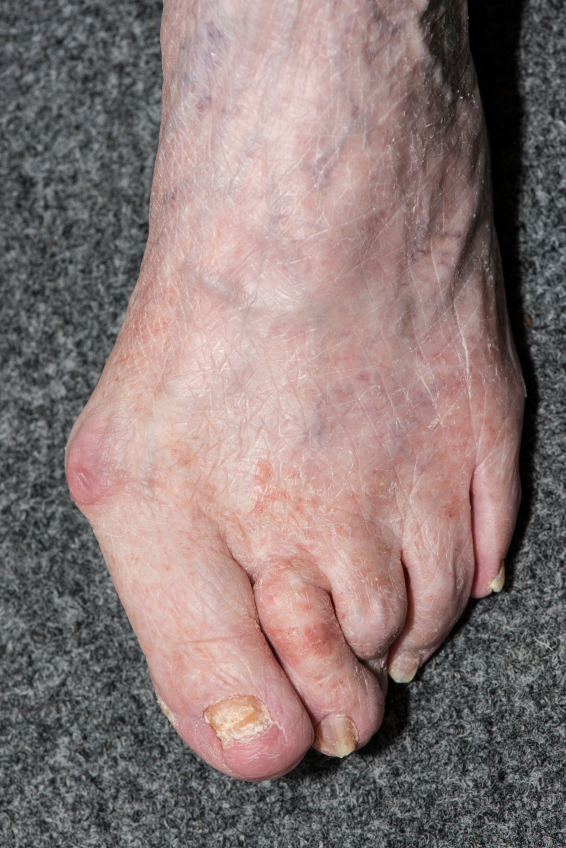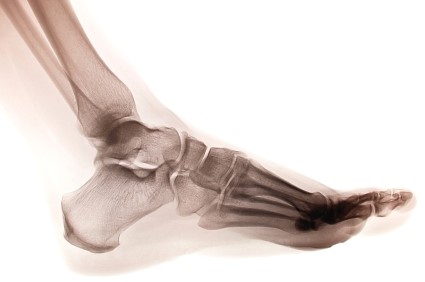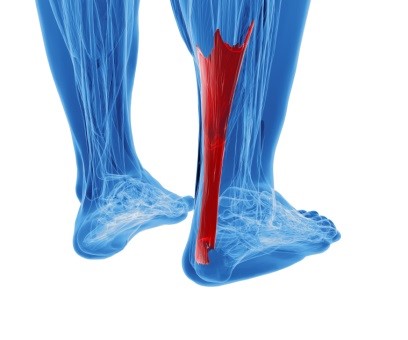Blog
Scientists Research Role of Foot Muscles
 University of Queensland scientists focused their research efforts and discovered the role foot muscles play in arch support. To prove that it isn’t just the plantar fascia, an experiment involving weights was conducted. The scientists monitored the responses of the muscles in their feet as the subjects moved.
University of Queensland scientists focused their research efforts and discovered the role foot muscles play in arch support. To prove that it isn’t just the plantar fascia, an experiment involving weights was conducted. The scientists monitored the responses of the muscles in their feet as the subjects moved.
Another experiment involving electrical stimulation was performed soon after, which showed that when activated, these tissues cause the arch to rise. Dr. Glen Lichtwark believes this could play an important role in fields focusing on the feet. This includes footwear design, injury rehabilitation, and even the biological understanding of bipedalism.
The biomechanics are the cogs behind the gears that manage your feet. If you would like more information, see podiatrist Dr. Genine Befumo of University Foot & Ankle Center. Dr. Befumo can provide in-depth information as well as measure your personal foot biomechanics.
A History of Biomechanics
- Biomechanics dates back to the BC era in Egypt where evidence of professional foot care has been recorded.
- In 1974 biomechanics gained a higher profile from the studies of Merton Root, who claimed that by changing or controlling the forces between the ankle and the foot, corrections or conditions could be implemented to gain strength and coordination to the area.
Modern technology improvements are based on past theories and therapeutic processes providing a better understanding of podiatry concepts for biomechanics. Computers provide accurate determinations about the forces, moments and patterns of the foot and lower legs with the most important information captured.
Advances in materials and more awareness of biomechanics have developed enhanced corrective methods, offering further options for foot-related injuries. Understanding foot biomechanics can help improve and eliminate pain, stopping further stress to the foot.
If you have any questions, please contact one of our offices in East Brunswick and Monroe, NJ. We offer the newest diagnostic and treatment technologies for all your foot care needs.
Read more about Biomechanics of Podiatry.
Basanta Roy Loses Hammertoe but Retains Passion for Mountaineering
 Basanta Kumar Singha Roy is planning to scale the Neelkanth peak of the Garhwal Himalayas sometime this August. This will be his first time mountain climbing again after a failed expedition to the top of Dhaulagiri last year, which ended in disaster when his oxygen canister sprung a leak. While his friend rushed to their camp to get help, Roy was left alone on the mountain in freezing conditions. After he finally got to the hospital doctors had to amputate several of his toes, including a hammertoe on his right foot.
Basanta Kumar Singha Roy is planning to scale the Neelkanth peak of the Garhwal Himalayas sometime this August. This will be his first time mountain climbing again after a failed expedition to the top of Dhaulagiri last year, which ended in disaster when his oxygen canister sprung a leak. While his friend rushed to their camp to get help, Roy was left alone on the mountain in freezing conditions. After he finally got to the hospital doctors had to amputate several of his toes, including a hammertoe on his right foot.
Fortunately Roy wasn’t too daunted by his loss. He has been making preparations for his trip to the Himlayas since the Dhaulagiri incident, and now he’s ready to stage his triumphant return to mountaineering. “Making a comeback was not that tough, because mountaineering has been a passion all my life and I owe it to my family because of their full support,” he said.
Hammertoes can be debilitating, but Roy’s case shows that it’s possible to make a full recovery from them. If you find yourself with this foot deformity, visit podiatrist Dr. Genine Befumo of University Foot & Ankle Center. Dr. Befumo can determine whether your condition is in fact a hammertoe and do everything in her power to treat you.
Hammertoe
Hammertoe is little-known a painful condition that affects the second, third and fourth toes involving different joints of the toe and foot. Hammertoe can be caused by many other conditions such as RA (rheumatoid arthritis), osteoarthritis, trauma or injuries to your foot, it can be hereditary and it can also be caused by a cerebral vascular accident. If you wear shoes that are too narrow or short for your feet, it may exacerbate any pain you already have.
It is really important to your overall well-being to seek out medical attention at the first signs of foot pain or anything that may hinder your ability to walk in a normal manner. Taking care of your feet is one of the first steps to being able to live a full and healthy life.
If you have any questions, please contact one of our offices in East Brunswick and Monroe, NJ. We offer the newest diagnostic and treatment technologies for all your foot care needs.
Read more about Hammertoes
Mixed Martial Artist Sustains Fractured Toe in Fight
 Uriah Hall defeated Thiago Santos at UFC 175 this week but didn’t leave the cage unscathed. Hall sustained a badly broken toe, presumably during the fight. The commentators remain unsure when or how exactly the injury occurred, but it became noticeable that Hall was limping midway through the first round after countering a powerful kick from his opponent.
Uriah Hall defeated Thiago Santos at UFC 175 this week but didn’t leave the cage unscathed. Hall sustained a badly broken toe, presumably during the fight. The commentators remain unsure when or how exactly the injury occurred, but it became noticeable that Hall was limping midway through the first round after countering a powerful kick from his opponent.
Hall clearly appeared to be having difficulty moving around after that, but he somehow managed to ignore the pain and beat Santos into submission. After the fight he posted a photograph of an X-ray of his foot online that showed that the second toe in his right foot was horribly dislocated.
Broken toes hurt. If you think your toe is broken, contact podiatrist Dr. Genine Befumo of University Foot & Ankle Center. Dr. Befumo can evaluate the severity of your injury and help you decide how you want to proceed with your treatment.
What to Know About a Broken Toe
Although most people try to avoid foot trauma such as banging, stubbing, or dropping heavy objects on their feet, the unfortunate fact is that it is a common occurrence. Given the fact that toes are positioned in front of the feet, they typically sustain the brunt of such trauma. When trauma occurs to a toe, the result can be a painful break (fracture). Another type of trauma that can break a toe is repeated activity that places stress on the toe for prolonged periods of time.
Symptoms of a Broken Toe
- throbbing pain
- swelling
- bruising on the skin and toenail
- the inability to move the toe with ease.
- toe appears crooked or disfigured
- tingling or numbness in the toe
- injured person experiences fever or chills throughout their body, and when there is an open, bleeding wound present on the toe.
Generally, a minor toe break will heal without long-term complications, but it is important to discontinue activities that put pressure on the toe.
For more information about Broken Toes, follow the link below.
If you have any questions, please contact one of our offices in East Brunswick and Monroe, NJ. We offer the newest diagnostic and treatment technologies for all your foot care needs.
Read more about Broken Toes
Predators Forward Suffers Ruptured Achilles
 Nashville Predator Mike Fisher has ruptured his Achilles tendon and will have to spend the next four to six months recovering. This means he’ll have to miss at least the first part of the 2014-2015 hockey season.
Nashville Predator Mike Fisher has ruptured his Achilles tendon and will have to spend the next four to six months recovering. This means he’ll have to miss at least the first part of the 2014-2015 hockey season.
Fisher’s absence will probably be a painful blow to Nashville’s already inferior offensive roster. The team managed to acquire some fresh blood in the form of James Neal and Olli Jokinen during the offseason, but it may not matter much without the presence of their star forward. The lineup will also have a new leader in coach Peter Laviolette, who was brought on this year to replace the fired Barry Trotz.
Achilles tendon injuries can be nasty business. If you think you have hurt your Achilles in some way, visit podiatrist Dr. Genine Befumo of University Foot & Ankle Center. Dr. Befumo will examine the afflicted area and prescribe an effective form of treatment.
What is the Achilles Tendon?
The Achilles tendon is a tendon that connects the lower leg muscles and calf to the heel of the foot. It is the strongest tendon in the human body, and is essential for making movement possible. Because this tendon is such an integral part of the body, any injuries to it can cause severe difficulties and should immediately be presented to a doctor.
What are the symptoms of an Achilles Tendon Injury?
There are various types of injuries that can affect the Achilles tendon. The two most common are Achilles tendinitis and ruptures of the tendon.
Achilles Tendinitis Symptoms
- Inflammation
- Dull to Severe Pain
- Increased blood flow to the tendon
- Thickening of the tendon
Rupture Symptoms
- Extreme pain and swelling in the foot
- Total immobility
Treatment and Prevention
Achilles tendon injuries are diagnosed by a thorough physical evaluation. Often the doctor will order an MRI to confirm the diagnosis. Treatment will involve rest, physical therapy, and in some cases, surgery. However, various preventative measures can be taken to avoid these injuries, such as:
- Thorough stretching of the tendon before and after exercise
- Proper fitting shoes
- A healthy diet
If you have any questions, please contact one of our offices in East Brunswick and Monroe, NJ. We offer the newest diagnostic and treatment technologies for all your foot care needs.
Read more about Achilles Tendon Injuries
Blog Archives
- April 2024
- March 2024
- February 2024
- January 2024
- December 2023
- November 2023
- October 2023
- September 2023
- August 2023
- July 2023
- June 2023
- May 2023
- April 2023
- March 2023
- February 2023
- January 2023
- December 2022
- November 2022
- October 2022
- September 2022
- August 2022
- July 2022
- June 2022
- May 2022
- April 2022
- March 2022
- February 2022
- January 2022
- December 2021
- November 2021
- October 2021
- September 2021
- August 2021
- July 2021
- June 2021
- May 2021
- April 2021
- March 2021
- February 2021
- January 2021
- December 2020
- November 2020
- October 2020
- September 2020
- August 2020
- July 2020
- June 2020
- May 2020
- April 2020
- March 2020
- February 2020
- January 2020
- December 2019
- November 2019
- October 2019
- September 2019
- August 2019
- July 2019
- June 2019
- May 2019
- April 2019
- March 2019
- February 2019
- January 2019
- December 2018
- November 2018
- October 2018
- September 2018
- August 2018
- July 2018
- June 2018
- May 2018
- April 2018
- March 2018
- February 2018
- January 2018
- December 2017
- November 2017
- October 2017
- September 2017
- August 2017
- July 2017
- June 2017
- May 2017
- April 2017
- March 2017
- February 2017
- January 2017
- December 2016
- November 2016
- October 2016
- September 2016
- August 2016
- July 2016
- June 2016
- May 2016
- April 2016
- March 2016
- February 2016
- January 2016
- December 2015
- November 2015
- October 2015
- September 2015
- August 2015
- July 2015
- June 2015
- May 2015
- April 2015
- March 2015
- February 2015
- January 2015
- December 2014
- November 2014
- October 2014
- September 2014
- August 2014
- July 2014




